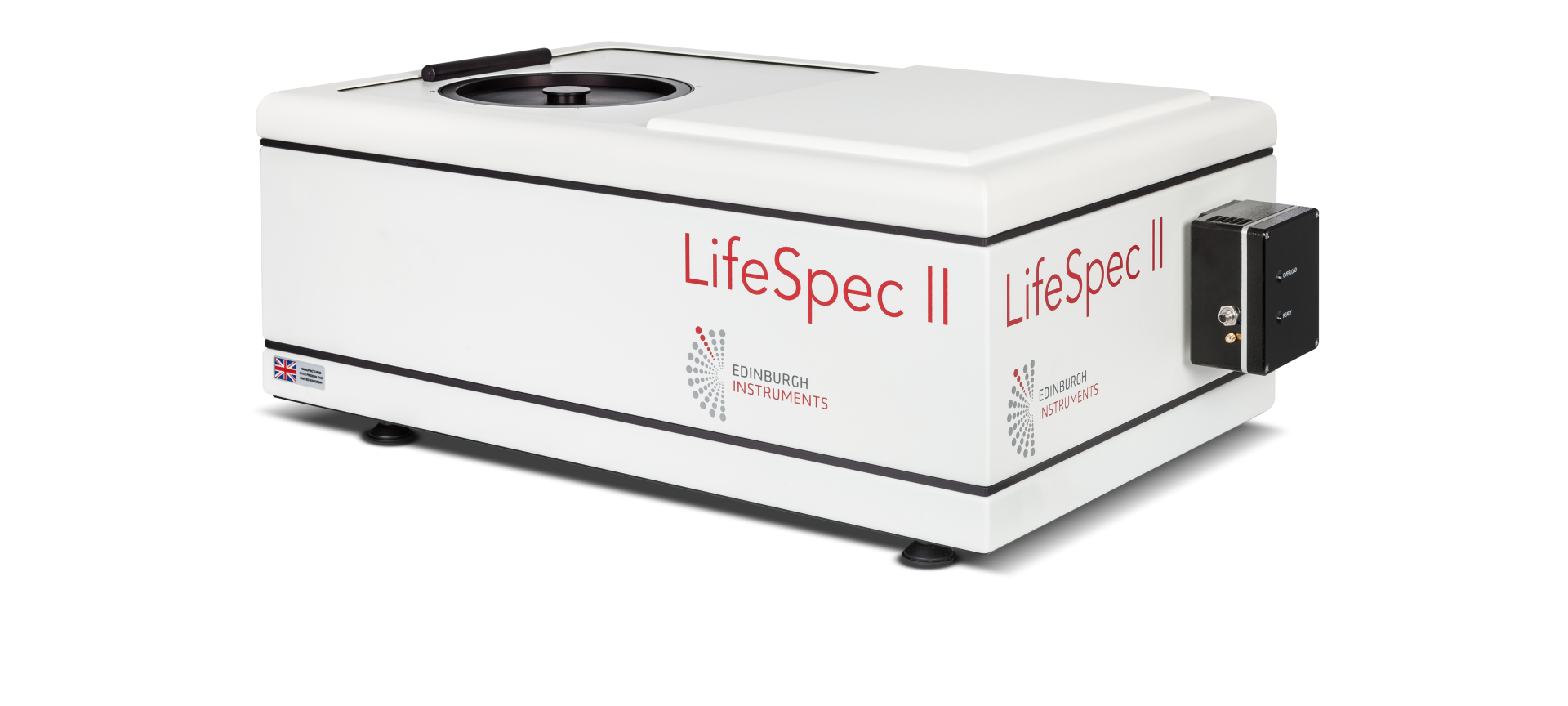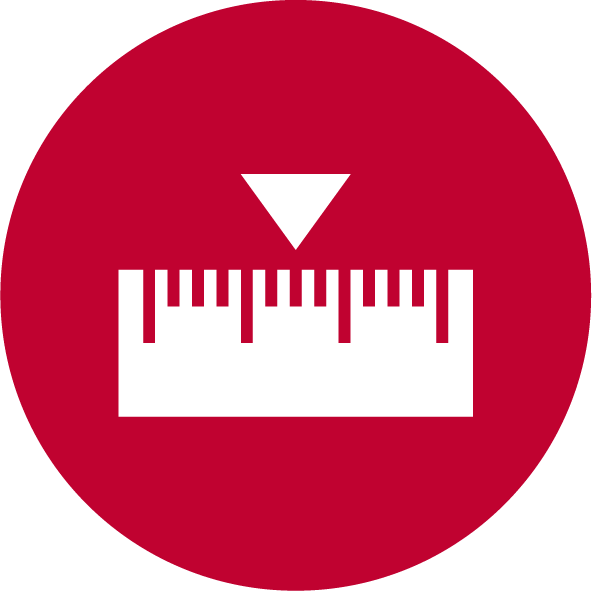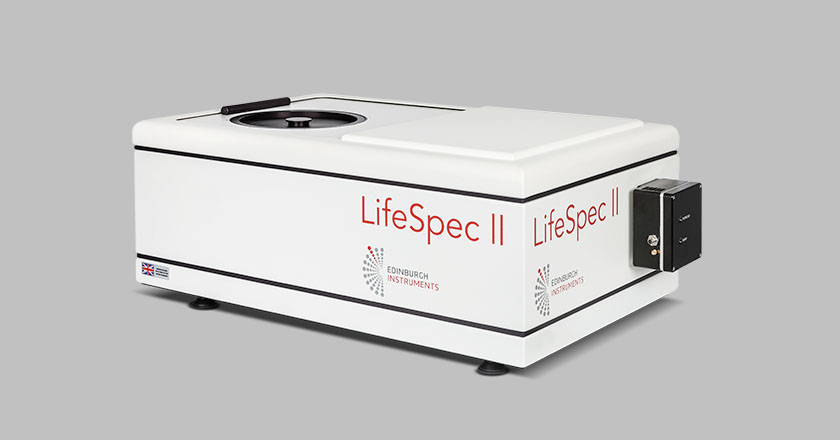
Sample Holder Options
Wide variety of sample holders for solids, liquids, and powders available

Send us your samples, and we can measure them live in an online demonstration
Contact us to arrange an online demonstration

Sample Holder Options

NIR Coverage

5 ps Lifetimes

Pulsed Laser Diodes

305 fs/channel

Bespoke Development
"*" indicates required fields
The Lifespec II is a compact, fully integrated, high performance, time-correlated single photon counting (TCSPC) fluorescence lifetime spectrometer for fast lifetime applications.
Its zero temporal dispersion optics, using double monochromators in subtractive mode, sets the standard for ultra-fast decay measurements. Lifetimes < 5 ps are achieved if using a fast laser (ps or fs) for excitation.
The system is a fully automated solution, combining hardware and software in a single package for fundamental research and routine laboratory applications. Data acquisition modes range from fluorescence lifetime decay acquisitions and time-resolved spectra to automated time-resolved anisotropy measurements and automated temperature maps.
The LifeSpec II requires at least one picosecond pulsed diode laser and pulsed LED, supercontinuum laser or Ti:Sapphire laser (with suitable pulse picker) for operation. Multiple lasers can be simultaneously coupled to the instrument.

The LifeSpec II spectrometer can be used with all modern high repetition rate pulsed sources, such as picosecond pulsed diode lasers and LEDs, supercontinuum “white” picosecond pulsed lasers, and femtosecond Ti:Sapphire lasers. The standard LifeSpec II comes with an adjustable receptor flange for Edinburgh Instruments picosecond pulsed diode lasers and UV-LEDs.
The Lifespec II standard cuvette holder features water/coolant circulation for adjusting temperature, filter slots, and monitoring of the sample temperature by the operating software.
A range of single position front-face sample holders are available for powders, thin-films and solids. These include linear staged holders, rotational holders and clamps.
Bath/Refrigerator (-25°C to +150°C), EPR Dewar (77 K) enable temperature control of samples at low cost.
A range of open and closed cycle (cryogen-free) cryostats are available for the Lifespec II, from 77 K (liquid nitrogen) or 4 K (liquid helium). Software control and mounting mechanics for the sample chamber are provided.
TE cooled cuvette holders are offered with a selection of temperature ranges controlled by the software, from -50°C to +15 °C.
The choice of detector is informed by the emission range and lifetime of the sample. Photomultiplier tube (PMT) detectors are available with different spectral coverages and temporal responses.
The following PMTs are available:
All PMTs are cooled and photon-counting for maximum sensitivity.
The software-controlled polariser upgrade makes it possible to measure time-resolved fluorescence anisotropy in the Lifespec II. An excitation polariser may not be needed if the laser’s emission is naturally polarised, which is the case for Ti:Sapphire and picosecond-pulsed diode lasers.
For precise fluorescence decays (energy relaxation), polarisers may be required to eliminate rotational artifacts that are superimposed on the fluorescence decay (“magic angle” measurements).
| Specification | |
|---|---|
| Optical Configuration | 90° between excitation and emission beam path |
| Mode of Operation | Time-Correlated Single Photon Counting (TCSPC) Optional Multi Channel Scaling (MSC) Upgrade |
| Excitation Source Options | All high rep rate pulsed sources such as picosecond pulsed diode lasers (EPL Series, HPL Series) and LEDs (EPLED Series), supercontinuum pulsed lasers and femtosecond Ti:Sapphire lasers. |
| Lifetime Range | 5 ps – 10 µs (depending on source and detector choice) Up to 1 s with MSC upgrade |
| Detector Options | 230 nm – 650 nm, 230 nm – 850 nm, 500 nm – 1700 nm |
| Mechanical Spectral Range | 200 nm – 900 nm (standard) plus 800 nm – 2000 nm (optional for infrared PMT detectors) |
| Spectral Band Pass | 0 to 60 nm (computer controlled) |
| Temporal Dispersion | Zero (negligible) |
| Laser Beam Attenuation | 4 orders of magnitude, continuously adjustable (computer controlled) |
| Spectrometer Software | F980 Software complete package for data acquisition and lifetime data analysis. |
| Wavelength Coverage | Detector Response Width | Dark Count Rate | |
|---|---|---|---|
| High Speed Blue PMT | 230 nm – 650 nm | 250 ps | <100 cps |
| High Speed Red PMT | 230 nm – 850 nm | 250 ps | <100 cps |
| MCP-PMT | 230 nm – 850 nm | <25 ps | <10 cps |
| NIR-PMT-1700 (LN2) | 300 nm – 1700 nm | 800 ps | <100,000 cps |
| NIR-PMT-1700 (TE) | 950 nm – 1700 nm | 400 ps | <100,000 cps |